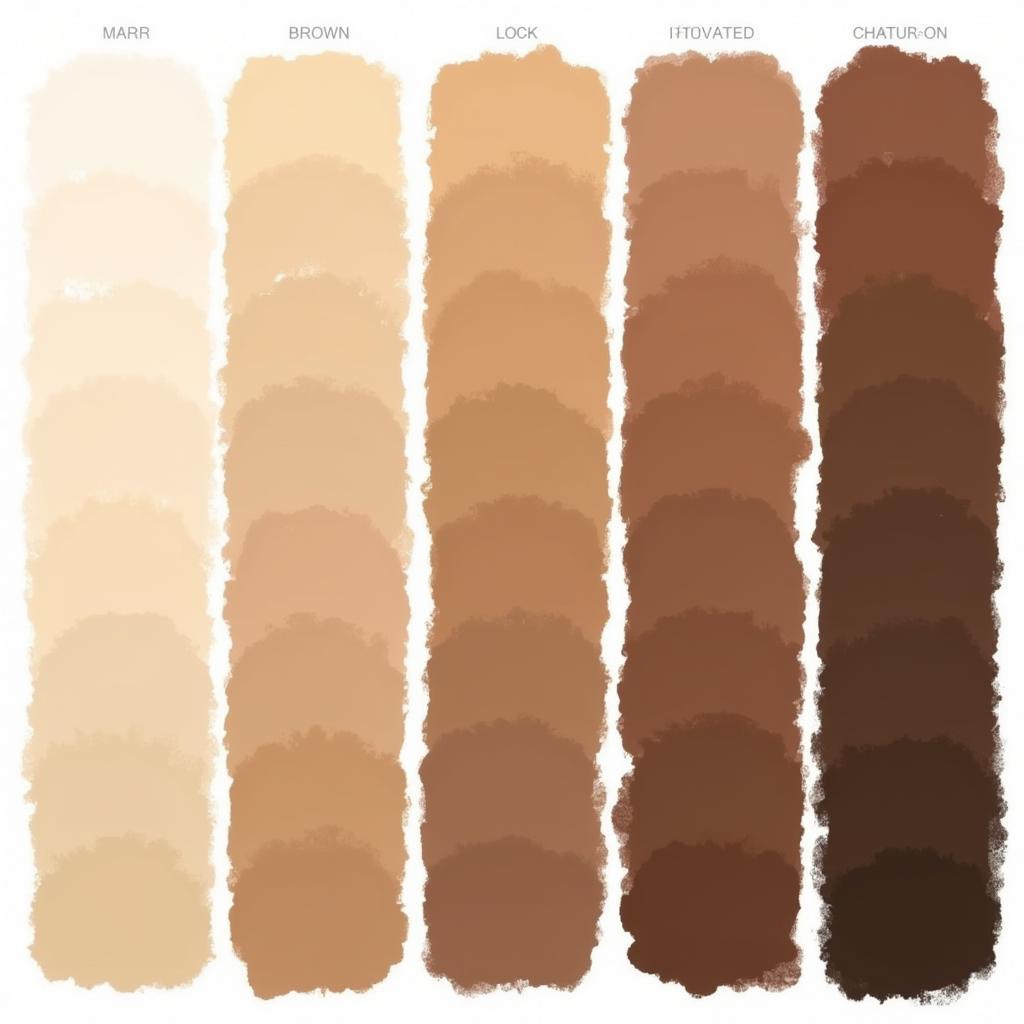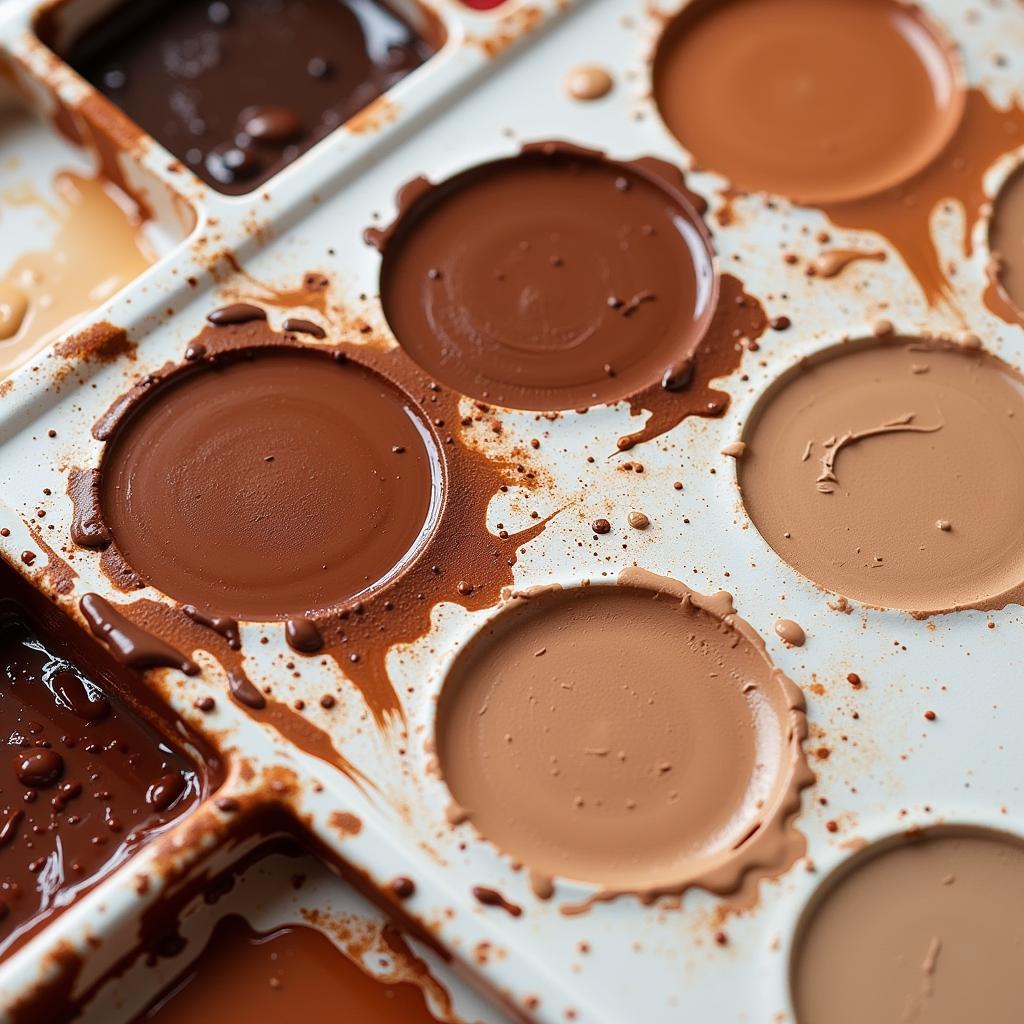Brown isn’t found directly on the traditional color wheel. This often confuses people learning about color theory. So where is brown on the color wheel, and how do we create it? Let’s dive into the fascinating world of color and uncover the secrets of this earthy hue. what is opposite of brown on the color wheel
Decoding the Absence of Brown
The standard color wheel, based on primary colors (red, yellow, and blue), shows pure hues. Brown, however, is a composite color, meaning it’s created by mixing other colors. You won’t find it neatly positioned like red or blue. Instead, brown is achieved through the clever combination of multiple hues, often involving all three primaries.
Mixing Your Way to Brown
There are numerous ways to achieve brown, each yielding subtly different shades. Here’s a common method:
- Start with orange: Combine red and yellow.
- Add blue gradually: Slowly introduce blue to the orange mixture. The amount of blue will determine the darkness and coolness of the brown.
- Adjust with complementary colors: For richer, more complex browns, consider adding small amounts of the complement of orange, which is blue.
The Role of Darkness and Saturation
Brown is essentially a darkened, desaturated orange. Think of it as orange that’s lost its vibrancy and shifted towards a darker tone. By reducing the intensity and brightness of orange, we create brown.
 Variations of Brown Based on Saturation and Darkness
Variations of Brown Based on Saturation and Darkness
How Do Complementary Colors Affect Brown?
Complementary colors, those opposite each other on the color wheel, play a crucial role in creating brown. While blue is the direct complement of orange, adding touches of other complements can add depth and complexity to your brown. what is opposite brown on the color wheel
Brown in Different Color Systems
While absent from the traditional RYB color wheel, brown does appear in other color models. In systems like HSV (Hue, Saturation, Value) and HSL (Hue, Saturation, Lightness), brown is represented within the orange hue range with reduced saturation and value or lightness. where is brown in the color wheel
What is the Opposite of Brown?
Since brown isn’t a pure hue, it doesn’t have a direct opposite on the traditional color wheel. However, the opposite of orange, which is blue, is often considered the general complementary color for brown. what is the opposite of brown on the color wheel
“Understanding the relationship between color and light is crucial for achieving the perfect brown. Light plays a major role in how we perceive the subtle nuances within each shade of brown,” says renowned color specialist, Amelia Hues.
 Brown Paint Pigments on an Artist's Palette
Brown Paint Pigments on an Artist's Palette
Conclusion
Brown, while not found explicitly on the standard color wheel, is a versatile and important color in art and design. Understanding its creation through mixing and its relationship to orange allows for precise control over its numerous shades. Remember, exploring color is an adventure, so experiment and discover the rich world of browns waiting to be unveiled. how to color dragons
FAQ
- Is brown a primary, secondary, or tertiary color? Brown is not classified as any of these; it’s a composite color.
- Can I buy pre-mixed brown paint? Yes, brown paint is readily available in various shades.
- What’s the difference between raw umber and burnt umber? Raw umber is a cooler brown, while burnt umber is a warmer, darker brown.
- What colors go well with brown? Brown pairs well with a variety of colors including cream, beige, green, and blue.
- Can I lighten brown paint? Yes, you can lighten brown with white or a lighter shade of brown.
- How do I make a reddish-brown? Start with red and add small amounts of yellow and blue.
- How do I make a cooler brown? Use more blue in your mix.
Need support? Contact us at Phone: 0373298888, Email: [email protected], or visit us at 86 Cau Giay, Hanoi. We have a 24/7 customer service team.

